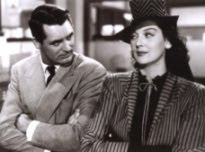Credit: Melinda Sue Gordon/Broad Green Pictures ©
I come, belatedly, to Terrence Malick's "Knight of Cups" and Angelina Jolie-Pitt's "By the Sea" largely because it was impossible to see either of them in a theater. Both received rather minimal, perfunctory, almost invisible releases, with scant publicity, and both were quickly whisked away by their handlers when no one showed up. Hmmm, I wonder why.
Both films are rather embarrassing and take a lot of patience, but neither is without a certain solipsistic charm. I rather like both because each one seemed to challenge/ignore Big Studio dictums about what would sell and what would play. I doubt that either one was shown to a preview audience of moviegoers ruined by CGI superhero flicks. Still, neither is very good.
Both are also rather difficult to decipher.
Malick's is typical of the disposable "art" that he has been churning out for decades. His first - and best - film, "Badlands" (1973) remains an oddity because it comes with such clarity and with a conventional narrative. His second film, on the other hand - "Days of Heaven" - was a still life committed to film featuring actors who were not required to act. That film, released in 1978, has served as a template for his oeuvre
ever since.
In "Knight of Cups," Christian Bale stumbles around a very appealing Los Angeles and neighboring places in a fog for two hours. Again, there's no acting, per se, even though the film has a huge cast - Cate Blanchett, Natalie Portman, Freida Pinto, Brian Dennehy, Wes Bentley, Antonio Banderas, Imogen Poots, Armin Mueller-Stahl, Jason Clarke, Nick Offerman, Kevin Corrigan, Ryan O'Neal, Clifton Collins Jr., Dane DeHann, Fabio (!), Joe Manganiello and, if you blink you'll miss her, Cherry Jones.
Odd. Actors want to be in a Malick film even if they do nothing.
A paid vacation, I guess.
I had no idea what was going on. The dialogue is either mumbled or muted. Then, it hit me. "Knight of Cups" is Malick's variation on Federico Fellini's "La Dolce Vita," with Bale playing the same cynical, disillusioned character as Marcello Mastroianni did in Fellini's 1960 art-house epic. The trouble is, this kind of storytelling plays better with subtitles.
Jolie-Pitt's "By the Sea" is also a foreign-film wannabe. In this case, she's aping Claude Lelouch. One makes the connection almost immediately, thanks to Gabriel Yared's Gallic music score and shots of Joie-Pitt (who wrote, as well as directed the film) cruising around the south of France in a benumbed state with her husband, Brad Pitt, behind the wheel of a swank little roadster.
Très charmant!
Anyway, something is clearly wrong with this marriage. There are vague references to a dead baby or child and, when both become obsessed with the newlyweds (forever having intercourse) in the hotel room next to theirs, I half expected the film to turn into "Who's Afraid of Virginia Woolf?" (1966). But Jolie-Pitt isn't playful enough to investigate that possiblity.
Instead, it turns into a rather bland domestic drama about a wife who thinks her husband drinks too much (and why wouldn't he?) while, self-deluded, she drinks just a much. But I liked Jolie-Pitt's distracted, woozy performance here. She's like a zombie here - not unlike Delphine Seyrig in Harry Kümel's "Daughter of Darkness" (1971).
Both "Knight of Cups" and "By the Sea" are hugely amusing, albeit it's clear their makers didn't have that intention at all.
credit: Universal Pictures ©























